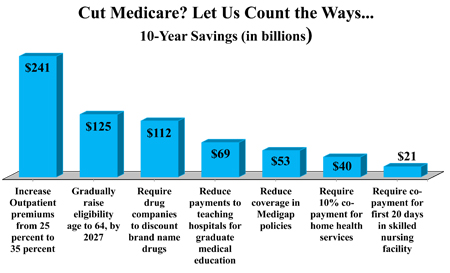Diane Archer has a post at the Health Affairs blog arguing that Medicare is more efficient than private insurance. One can only reach such a conclusion through such sleights of hand as conflating spending with cost, and by ignoring most of Medicare’s administrative costs.
As a pre-buttal, I offer this excerpt from a paper I wrote about a “public option” (emphases generally added and citations omitted):
Is Government More Efficient?
Supporters of a new government program note that private insurers spend resources on a wide range of administrative costs that government programs do not. These include marketing, underwriting, reviewing claims for legitimacy, and profits. The fact that government avoids these expenditures, however, does not necessarily make it more efficient. Many of the administrative activities that private insurers undertake serve to increase the insurers’ efficiency. Avoiding those activities would therefore make a health plan less efficient. Existing government health programs also incur administrative costs that are purely wasteful. In the final analysis, private insurance is more efficient than government insurance.
Administrative Costs
Time magazine’s Joe Klein argues that “the profits made by insurance companies are a good part of what makes health care so expensive in theU.S.and that a public option is needed to keep the insurers honest.” All else being equal, the fact that a government program would not need to turn a profit suggests that it might enjoy a price advantage over for-profit insurers. If so, that price advantage would be slight. According to the Congressional Budget Office, profits account for less than 3 percent of private health insurance premiums. Furthermore, government’s lack of a profit motive may not be an advantage at all. Profits are an important market signal that increase efficiency by encouraging producers to find lower-cost ways of meeting consumers’ needs. The lack of a profit motive could lead a government program to be less efficient than private insurance, not more.
Read More » »


